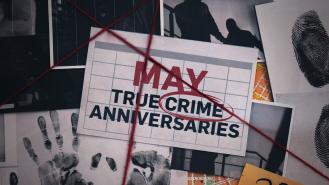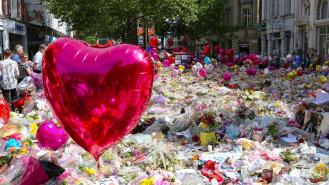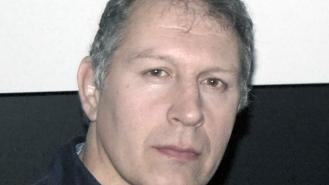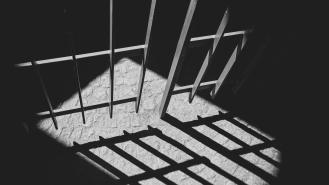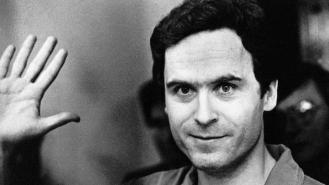A community in disbelief
Victims were taken to the Princess Margaret Hospital in Swindon. Although situated 15 miles from Hungerford, it was the nearest hospital with an Accident and Emergency department equipped to deal with the numerous casualties with high-velocity gunshot wounds. Routine admissions were cancelled, the X-ray department and the blood bank were put on alert, extra doctors and support staff was made available and the victims started pouring in.
At around 4 pm, the Royal Air Force hospital in nearby Wroughton contacted the Princess Margaret Hospital to inform them that they could take the next two serious and six minor casualties. The Housing Department of Newbury District Council made accommodation available for those residents of South View who found themselves homeless after the fires Ryan had started.
LIFE SAVERS
Lance Corporal Carl Harries, 21, a young off-duty soldier and veteran of the Falklands War, was on his way into town, to pick up a radiator hose, when he walked into the midst of the massacre. Not able to stand by and idly watch people suffer, he had repeatedly risked his life to help a number of victims, giving first aid where he could and solace to those having lost loved ones. Harries later received the Queen’s Commendation for Brave Conduct.
Amongst others also later commended for their bravery were ambulance-women Hazel Haslett and Linda Bright, who had been shot at by Ryan but who had continued working selflessly late into the night to help other victims.It was reported in the tabloid newspapers that following the public announcement of Ryan’s death, the people of Hungerford reacted with relieved delight. People were said to have run into the streets chanting, “The bastard’s dead, the bastard’s dead”, whilst children cycled around on their bikes, yelling “Good riddance”, and people in pubs toasted his death. Whether or not these were completely accurate accounts, they certainly encapsulated the emotion of relief foremost in people’s minds immediately after the massacre that the carnage was finally over.
Ron Tarry, Hungerford’s Mayor, claimed that the locals were in shock and speaking in hushed tones and that it was the press and others who had flocked to the scene who were doing the drinking in pubs. Either way, the mourning period for an entire town was still to be endured.The Reverend David Salt received countless communications of support and offers of help poured in to the Hungerford vicarage. Flowers began arriving at the town hall, where the flag flew at half-mast. The Hungerford Family Help Unit was hastily established in makeshift offices, co-ordinated by John Smith, to help a community suffering from Post Traumatic Stress Disorder.
The Round Table helped by providing funds for taxis, rents, television rentals and other services. Cash and cheques poured in from well-wishers, some even from children, and a Tragedy Fund was established, in collaboration with Lloyds TSB, Barclays and NatWest, the three banks in Hungerford.
The Queen Speaks
Her Majesty the Queen’s private secretary sent a letter of condolence from Buckingham Palace to Mayor Tarry and enclosed a personal contribution from the Queen. Prime Minister Mrs Thatcher interrupted her Cornish holiday to visit Hungerford. Close to tears, she toured the streets, met with the relatives and visited victims in hospital.
All over Berkshire, the funerals that followed the massacre were deeply poignant. Many were attended by people who had never known the deceased in life, but wished to show support for their families and the bereaved Hungerford community in general. In contrast, Dorothy Ryan’s funeral service, held at St Mary’s Church in Calne, Wiltshire, was only attended by 40 mourners. Whilst people did recognise that she was a victim, Canon John Reynolds, who conducted the service, selected not to mention her son and only made a brief reference to the Hungerford massacre.
BUT WHY?
Following the massacre, the British press was inundated with stories about Michael Ryan and speculation as to why he had committed so many acts of unprovoked violence. Dr Gregory Moffat, a childhood aggression specialist, claimed that victims of bullying are generally small, weak, lack confidence and are loners. Their inability to defend themselves against their bullies means that shame, guilt, anger, hate and the need for revenge builds inside them. This powerful mix of emotions is often later expressed in an inappropriately violent response. This seemed to fit the profile of Michael Ryan.
The Hungerford Report
The British Home Secretary, Douglas Hurd, travelled to Hungerford on Sunday, 23 August 1987. There he announced that he had commissioned a report on the massacre from the Chief Constable of Thames Valley Police, Colin Smith. The Hungerford Report confirmed that Ryan’s weapons had been legally licenced. It also transpired that there were several unfortunate incidents encumbering the response by the police and other emergency services to the events on 19 August 1987.
The local Hungerford police station was in the process of being renovated and had only two telephone lines working on that day. In addition to this, the local telephone exchange could not handle the amount of 999 calls that were being made, as Ryan wreaked havoc across the suburbs and people desperately tried phoning for help. In a further twist of fate, the local police helicopter was in for repair but police mechanics eventually made it ready for flight and it was deployed at around the time Ryan shot his mother. Adding to the sound of gunfire in the area was the fact that the Thames Valley firearms squad were in training, about 40 miles away.
The Hungerford Report led to the Firearms (Amendment) Act 1988, which banned the ownership of semi-automatic centre-fire rifles and restricted the use of shotguns with a magazine capacity of more than two rounds.
Memorial Service
On 8 October 1987, a memorial and rededication service was held for the town of Hungerford. Mayor Tarry claimed it to be the day on which life in the town could begin once more. The open-air service outside the town hall was attended by over 60 percent of the population of Hungerford and the principal sermon preached by Right Honourable Robert Runcie, Archbishop of Canterbury.Apart from the numerous local and international newspaper articles written about the Hungerford Massacre and Michael Ryan, there were also several books. These include ‘Lonewolf: True Stories of Spree Killers’ (May 2002) by Pan Pantziarka and ‘The Encyclopedia of Mass Murder’ by Brian Lane and Wilfred Gregg (1993). Ryan has also been documented on internet sites devoted to mass murder. Some more minor details of that fateful day in 1987 vary in the different accounts but all agree that it will remain in memory as one of the worst gun crimes in British history.Sir Charles Pollard, Chief Constable of Thames Valley Police from 1991 – 2001, commented, “The realisation that this could happen in fun-loving England, where we don’t have guns and the police aren’t armed… it changed policing and it changed society forever.”

